Search
Rank order questions help in understanding how respondents prioritise or prefer different options by asking them to arrange choices in a specific order. This question type is useful for identifying preferences, measuring importance, and comparing multiple options based on respondent rankings. It provides valuable insights into customer opinions.
Let us see how it’s done.
1. Create a rank order question with multiple answer choices and share it with your respondents.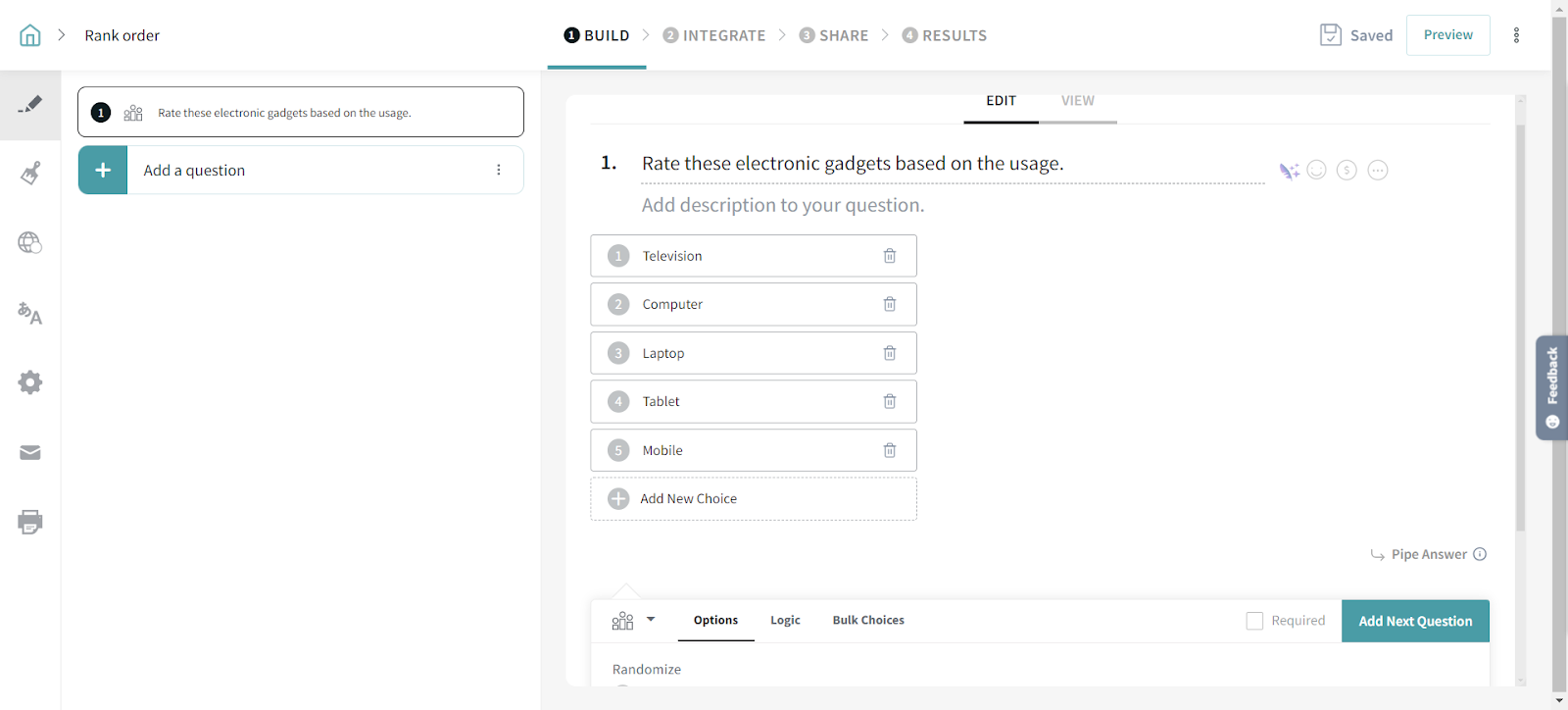
2. Navigate to the Results section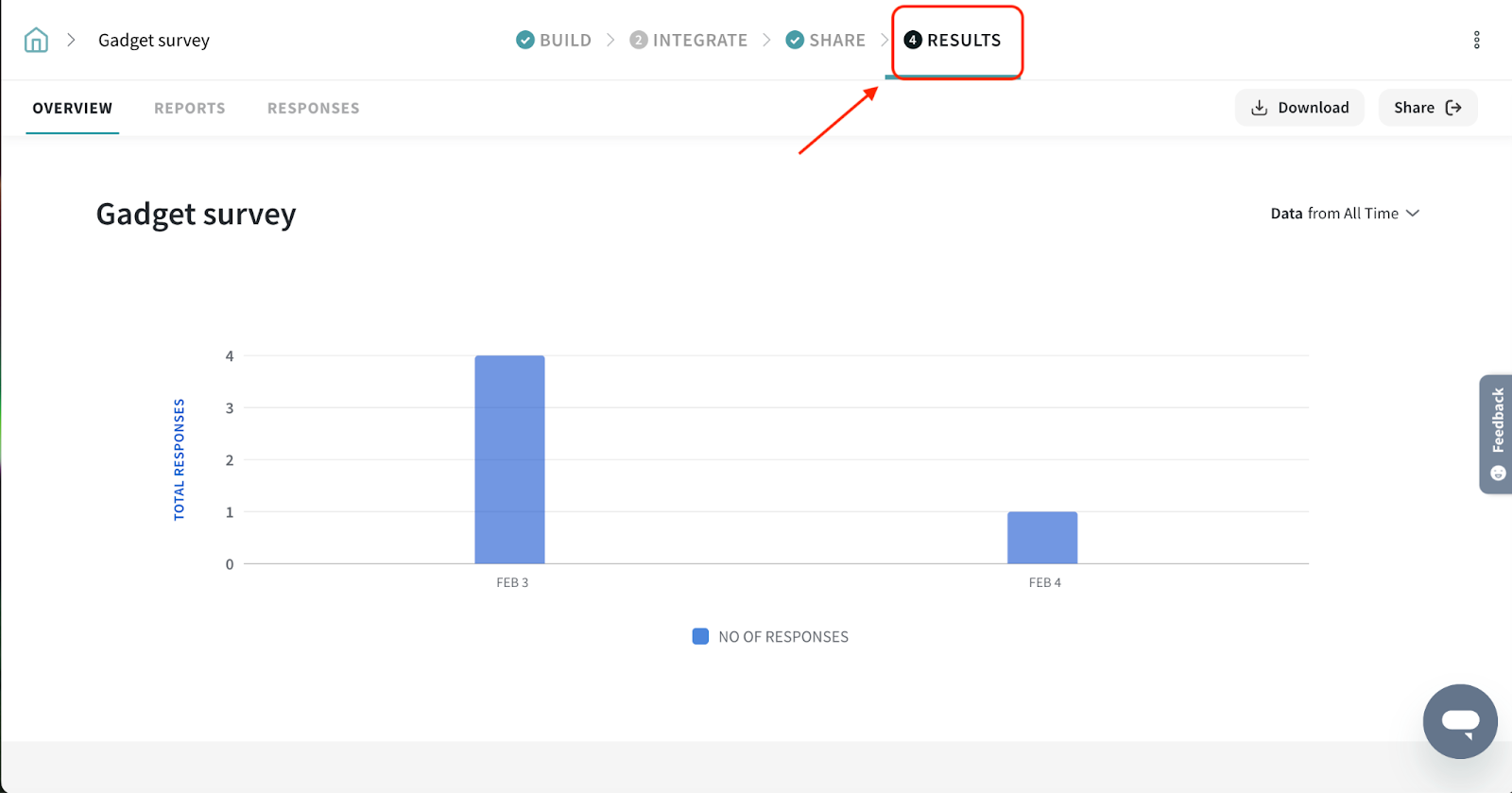
3. Go to Reports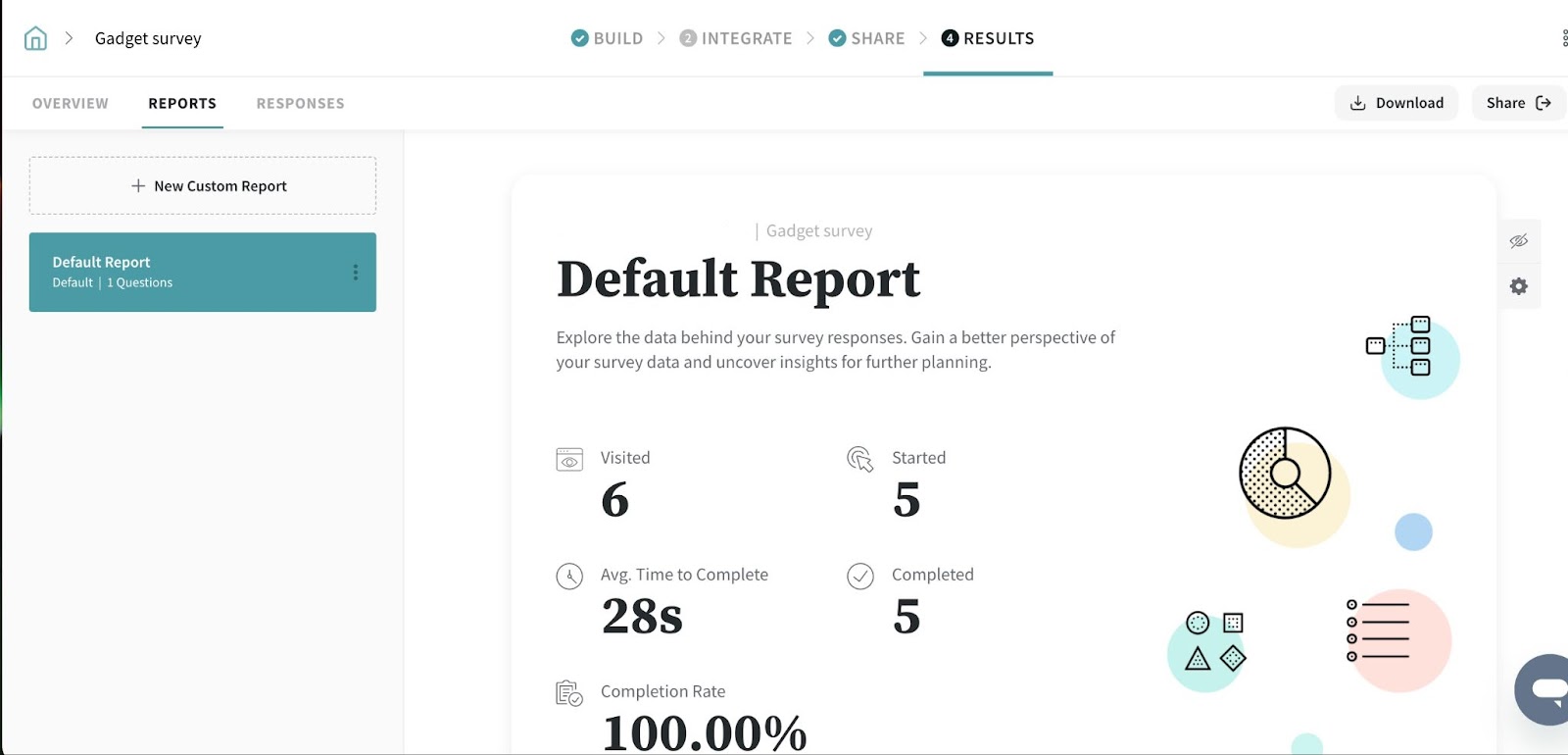
The bar chart displays choices in rank order based on their scores. Higher-ranked choices appear at the top, while lower-ranked choices are shown below, making it easy to compare rankings at a glance.
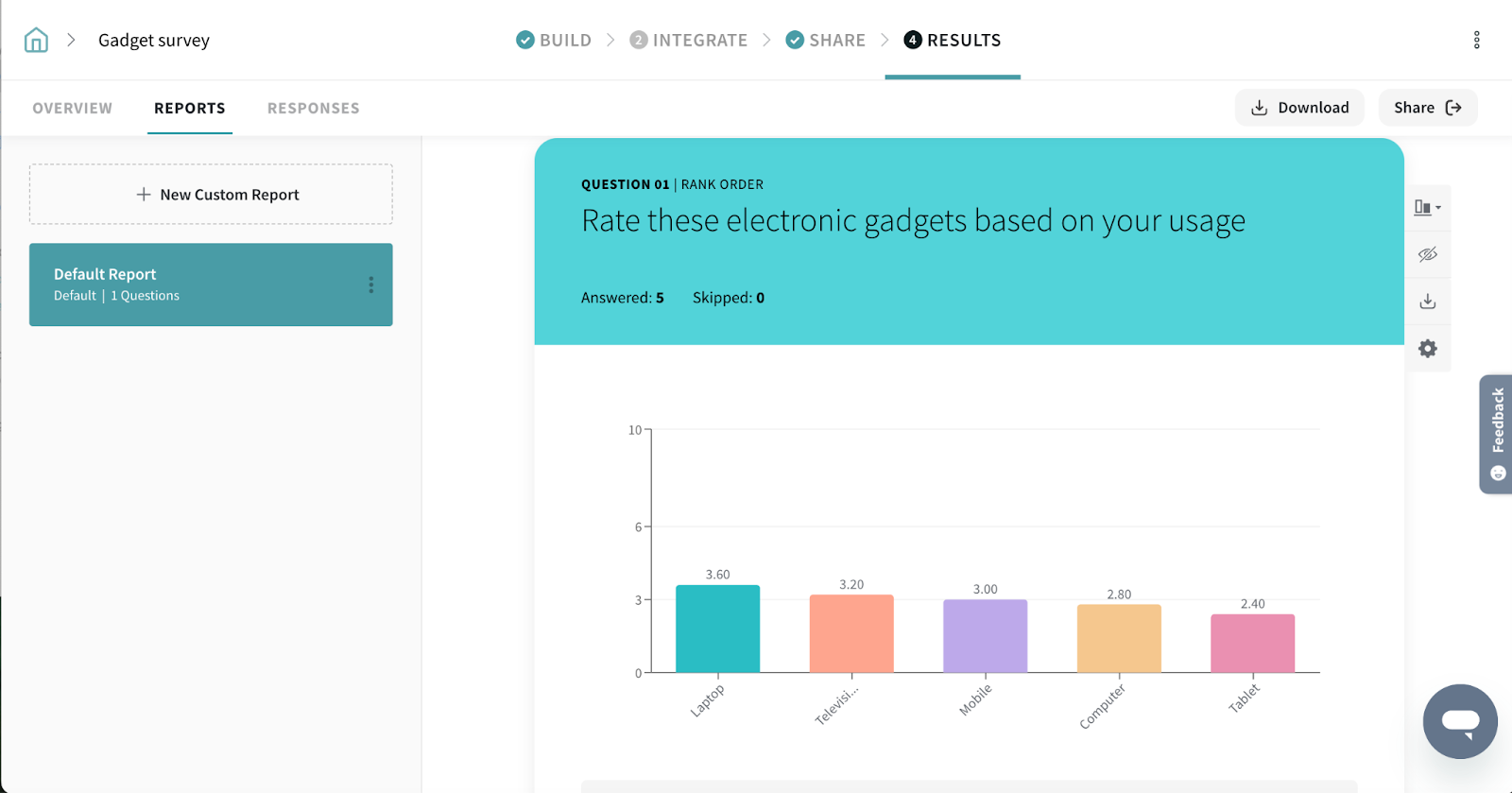
The table shows the following:
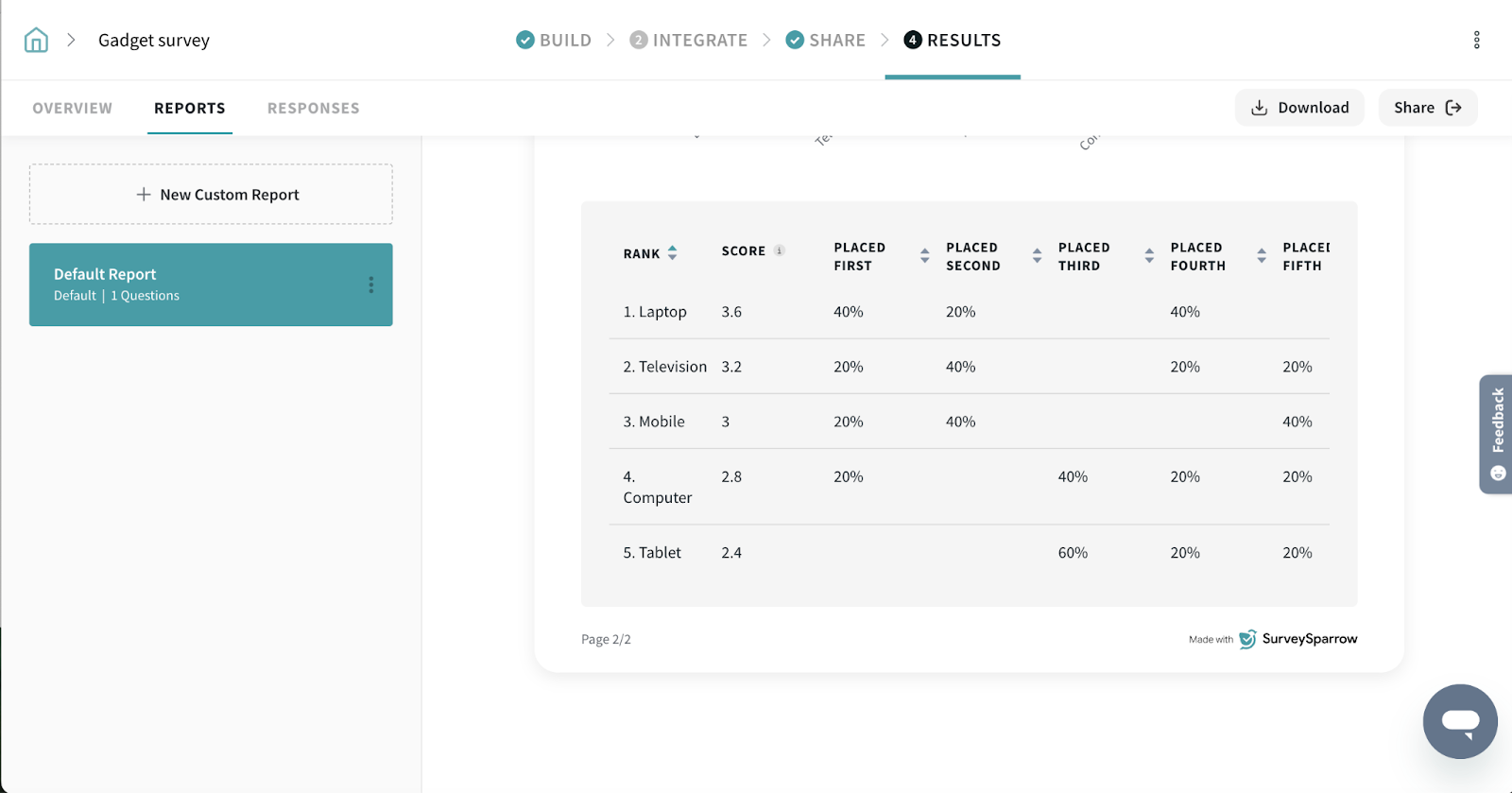
Now, let's dive deep into the calculation part.
Under Results -> Responses, when your survey gets new responses, you will find the respondents’ choices to your rank order question aligned in their chosen order. Refer to the screenshot below.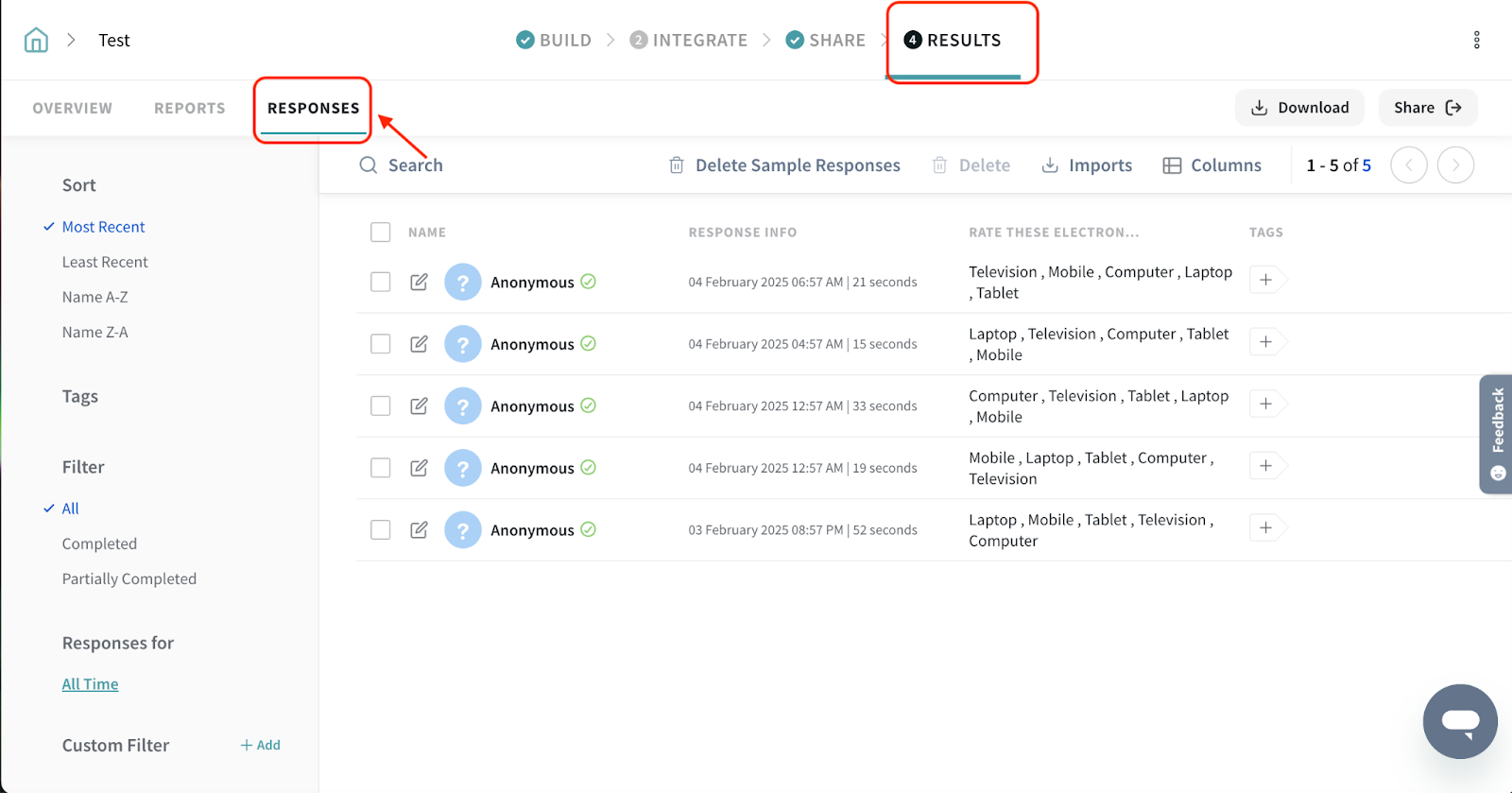
3. Here, we've got 5 survey responses for this survey.
To calculate the score, you should know the individual score first.
Let's take a survey response for an example:
Television, Mobile, Computer, Laptop, Tablet
In this example:
- The score of the first choice is 1 which is for Television. (Regardless of the number of choices, the score of the first choice is always 1)
- In our example, the total number of answer choices is 5.
Now, let's divide 1 by the total number of answer choices, which is 1/5 = 0.2. The scores of the remaining answer choices are consecutively reduced by 0.2.
So the individual scores are
Television (1), Mobile (0.8), Computer (0.6), Laptop (0.4), Tablet (0.2)
Similarly, we've calculated the individual scores for all the survey responses. Here’re they:
Now that we’ve derived the individual scores, the next step is to calculate the average score. To calculate the average, you have to add all the individual scores in each of the survey responses.
Average Scores:
Hence the score of all the answer choices is also derived.
That's it! Hope you found this article helpful.
Feel free to reach out to our community if you have any questions.
Powered By SparrowDesk